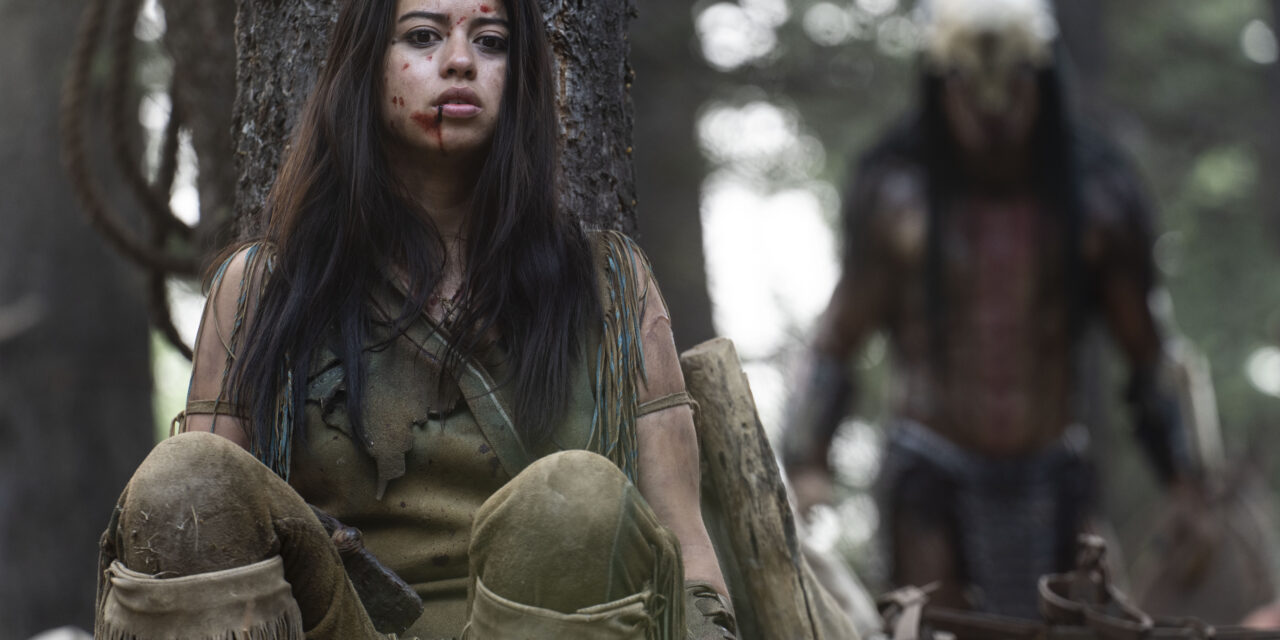1987’s Predator brought together a gang of one-line dropping mercenaries sent on a quick rescue mission in a rainforest in Central America. However, the numbers game and sheer amount of artillery were no match for an invisibility-cloaked, high-tech alien. The film stretched our imaginations on what we considered hunters and prey wrapped up in a sci-fi/horror package. The Predator franchise has taken various turns, peaks, and valleys, to say the least. There was a stop in Los Angeles with 1990’s Predator 2, a set of crossover tussles with Aliens vs. Predator, a sequel to the first film with Predators, and a pseudo-present day sequel with 2016’s The Predator. Did you get all of that? The franchise has been searching to reclaim its original essence of terror, suspense, and subtle campiness.
Dan Trachtenberg’s Prey has finally cracked that code. It has a beautiful coming-of-age story mixed with the most appreciated theme of what made the first film great — the hunt and chase. Sometimes you have to go back to the past to reclaim your essence. The opening minutes of Prey greets us with a simple message — “a long time ago. It said that a monster came here.” From that point, the audience is transported to 1719 within Comanche Nation. A teenage girl named Naru (Amber Midthunder) longs to be accepted as a hunter like her brother Taabe (Dakota Beavers). While stalking a deer, Naru sees a collection of lights in the sky — indeed, feeling this is a sign she’s ready for her Kuhtaamia (rite of passage). The problem is that Taabe, their mother Aruka (Michelle Thrush), and male members of the tribe don’t think Naru is up to the task.
However, as a reoccurring story beat throughout Prey would convey, appearances can be deceiving. Naru may not seem threatening at first, but she’s a tracking expert, has an eye for detail, and is constantly developing her hunting skills. Where members of her tribe dismiss abnormal footprints and animals who are massacred in strange ways, Naru elects to stay on the trail. The combination of Midthunder’s acting and the story from Patrick Aison and Trachtenberg makes you fully invest in the character’s journey. Prey provides nothing easy to Naru — there are growing pains you will witness in how tedious hunting can be. However, the callbacks from difficult situations Naru goes through making her triumph that much more meaningful. Midthunder switches between contemplation, quick wit, and undying resolve at the flip of a coin.
For example, there’s a mud pit Naru almost sinks and climbs her way out. That instance is put together with a grab-bag of skills that will eventually help her when she fights the Predator. They feel natural to the story and even call back to the original 1987 film. A Predator-set film wouldn’t be anything without its intergalactic antagonist. Trachtenberg sets things in motion where an entity that overpowers the setting it jumps into is also learning. A motif shows a succession of food-chain situations, with animals displaying what happens when something not natural to that habitat is introduced. Prey ventures to provide the answer about what people and the environment can do about it.
The dangers are not only from distant worlds — another element of French soldiers comes into play. Thus, a hierarchy of who considers what is threatening or not constantly changes, providing an exciting layer to Prey‘s story. This film could have quickly fallen for the one-on-one aspect. But it elects to speak on gender roles, colonization, and how peril presents itself in the wild.
The cinematography of Jeff Cutter expertly captures the lushness of the forest that makes you feel involved in the period piece. Producer Jhane Myers, a member of the Comanche nation, helps elevate Prey with a delightful level of authenticity. Most of the cast are Native American or Canadian First Nation, so the feeling of togetherness feels much more powerful. Sarah Schachner’s violin-ladened score heightens danger during moments of isolation and elevates the taste of victory when they come.
Regarding the violence, Prey delivers the goods in the land of muskets and tomahawks. The fight scenes are swift, tactical, and brutal — so goes the nature of survival. The perseverance of the human spirit is a universal story one could inject anywhere. Trachtenberg fully uses the 90+ minutes allotted to him to return the Predator franchise to stable ground.
Photo Credit: 20th Century Fox













